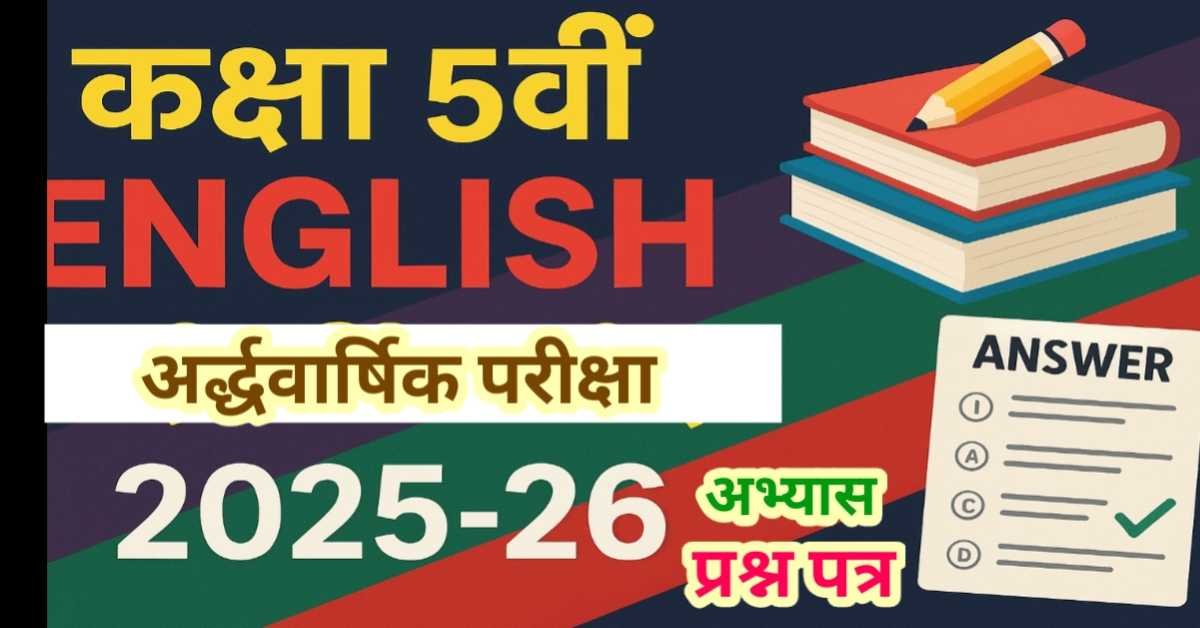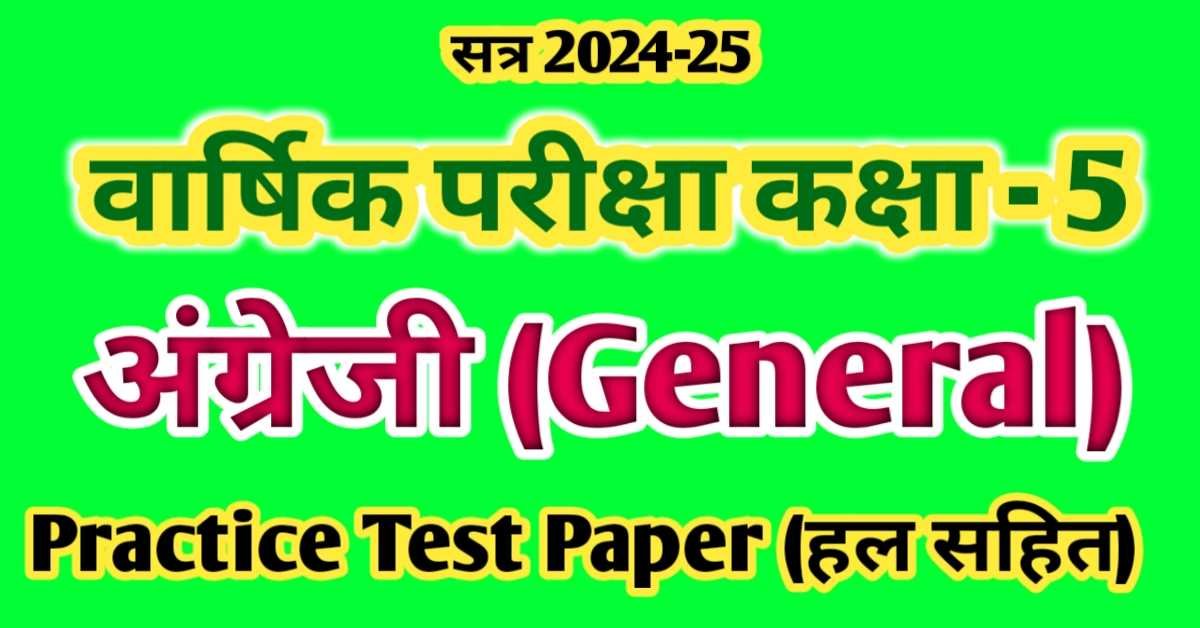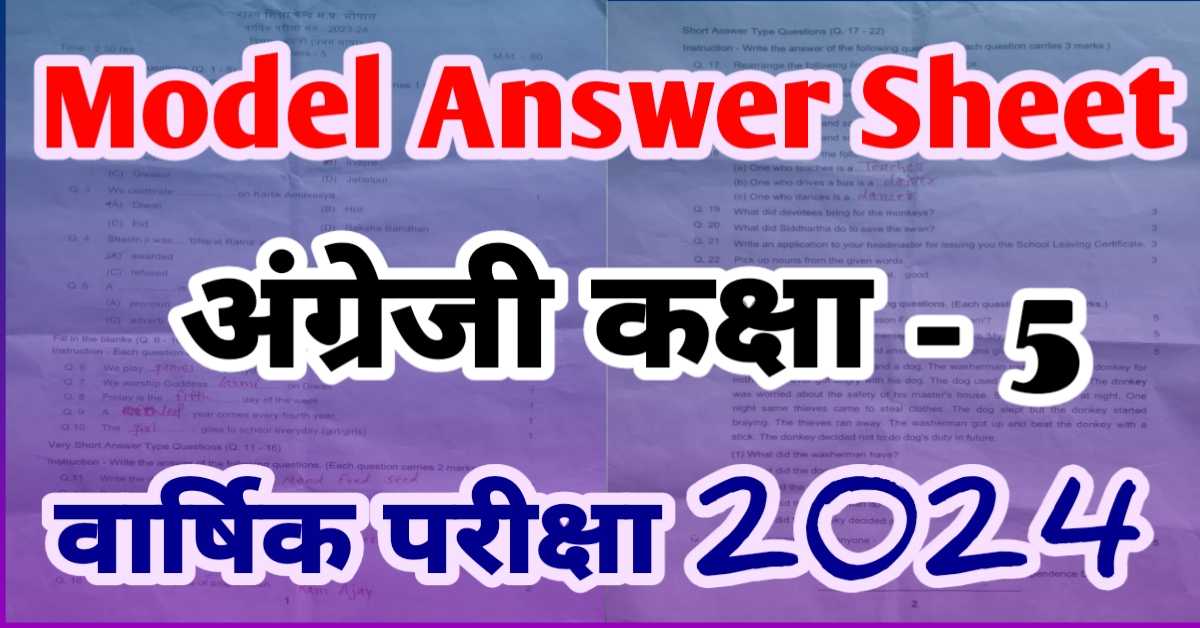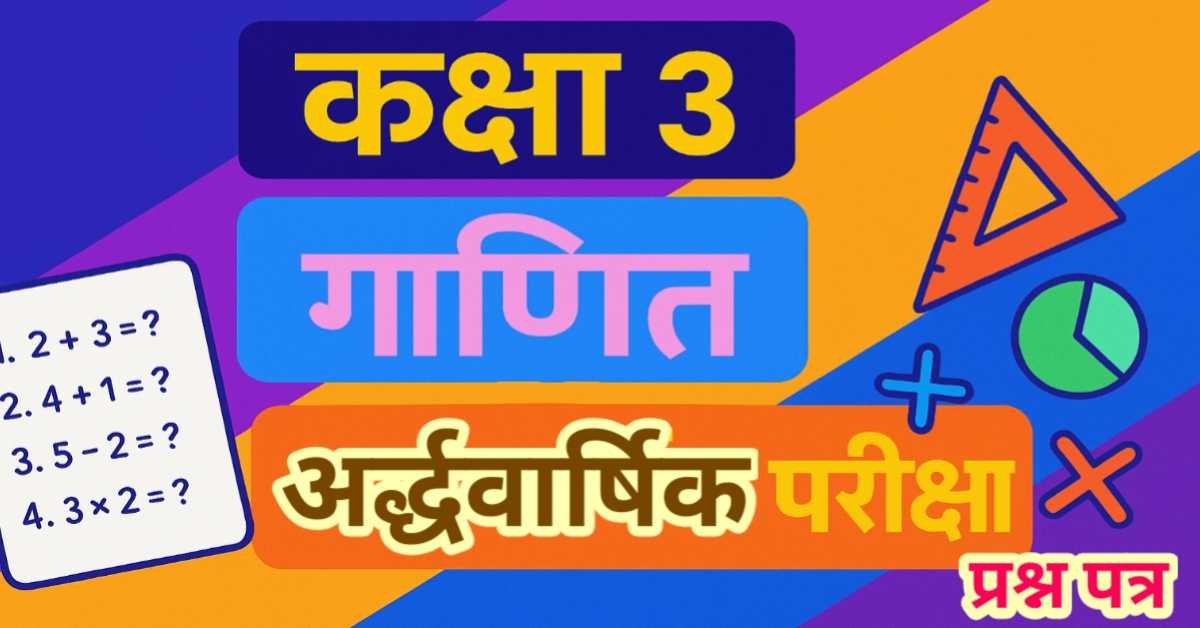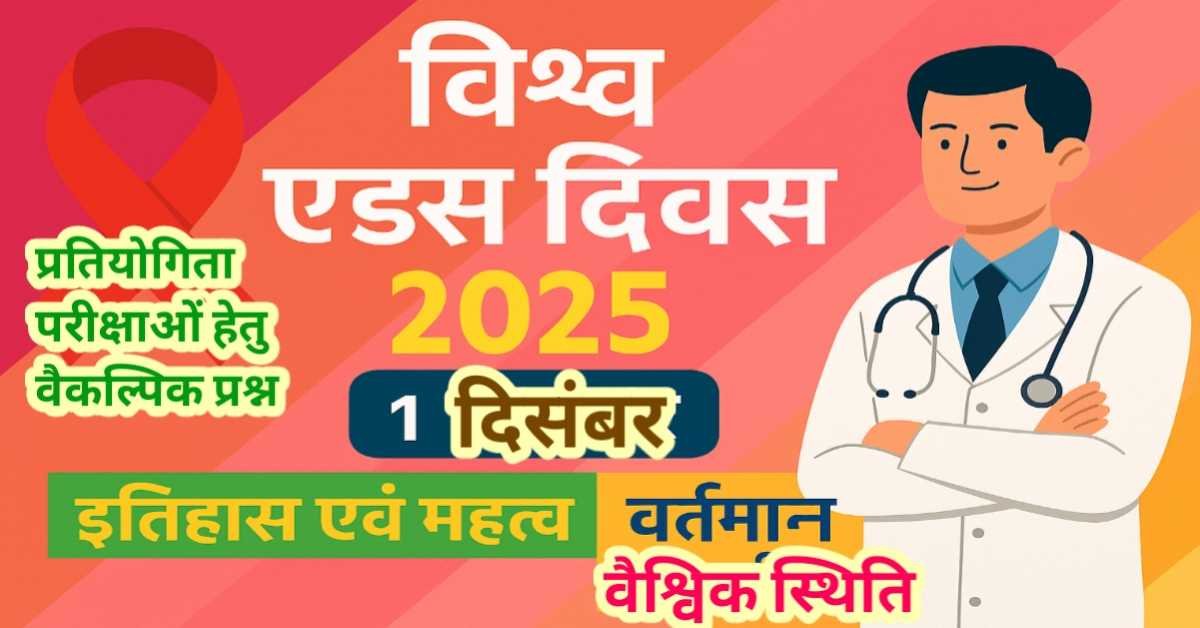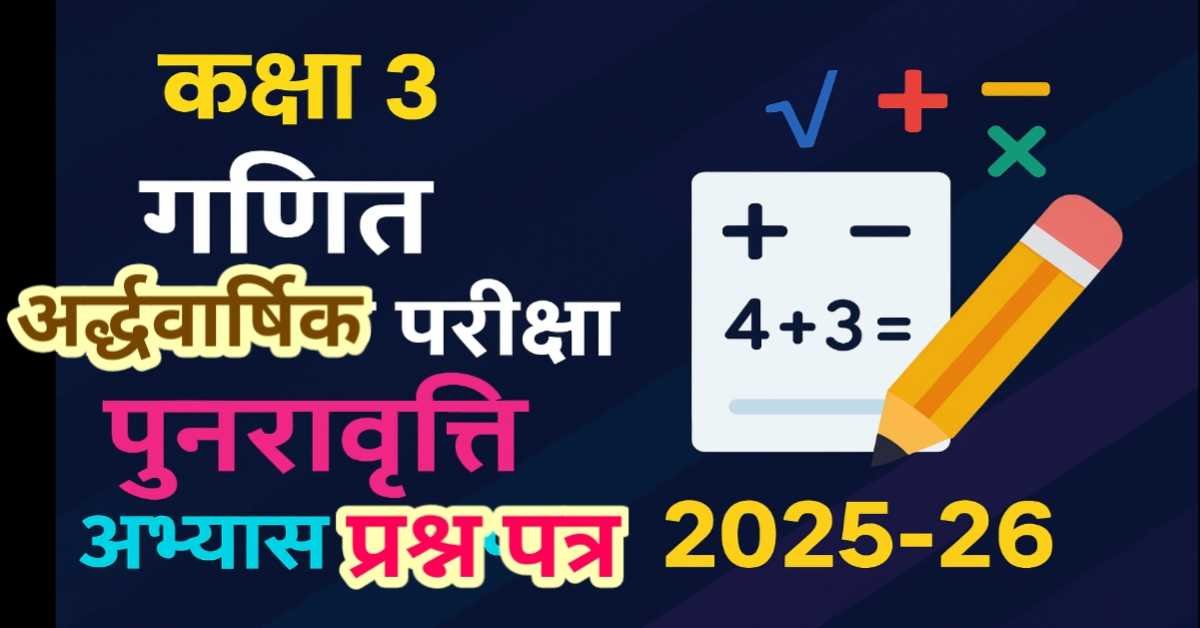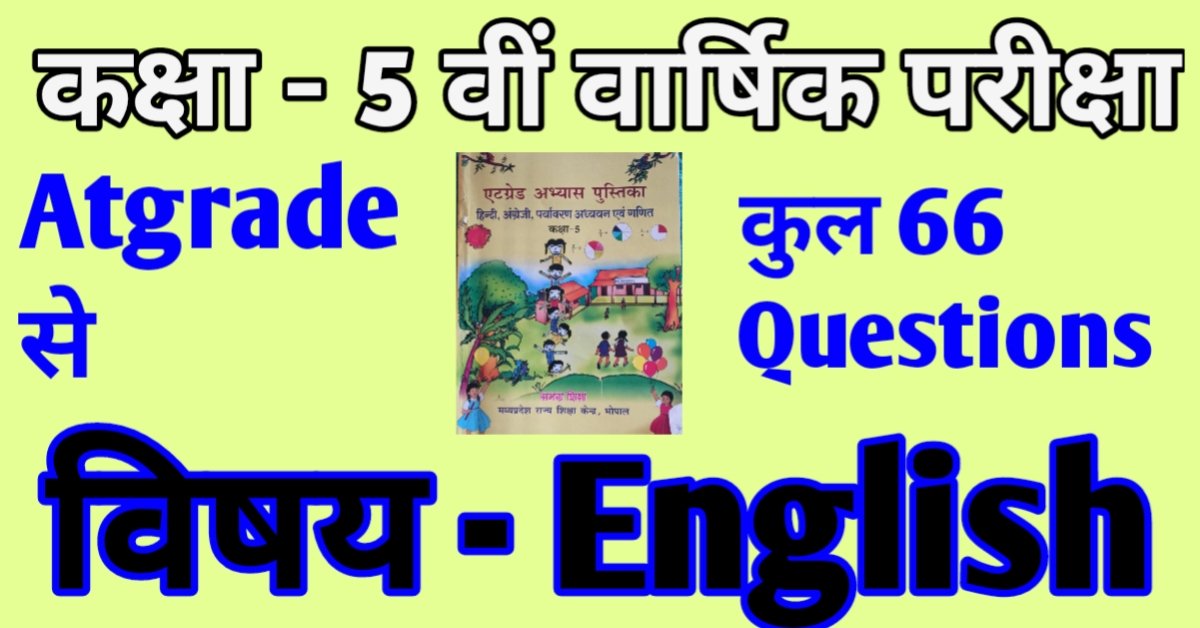
Important Questions for Annual Exam Class V Subject English || Questions of Atgrade booklet || विषय अंग्रेजी के एटग्रेड पुस्तिका से
Q. 1 - Write the plural for the following words.
(निम्नलिखित शब्दों के लिए बहुवचन लिखिए।)
Ans.-
Singular - Plural
bird - birds.
hand - hands
Q.2 - What is the colour of the grass?
(घास का रंग कैसा होता है?)
Ans. - green.
Q. 3 - Write the rhyming word for 'tree"?
('ट्री' का तुकांत शब्द लिखिए?)
Ans. - bee.
Q.4 - What has God given us to read?
(भगवान ने हमें पढ़ने के लिए क्या दिया है?)
Ans. - God has given us books to read.
(भगवान ने हमें पढ़ने के लिए किताबें दी हैं।)
Q. 5 - How do birds and butterflies fly?
(पक्षी और तितलियाँ कैसे उड़ते हैं?)
Ans. - Birds and butterflies fly with their wings.
(पक्षी और तितलियाँ अपने पंखों से उड़ते हैं।)
Q .6 - What has God given us to eat?
(भगवान ने हमें खाने के लिए क्या दिया है?)
Ans. - God has given us food to eat.
(भगवान ने हमें खाने के लिए भोजन दिया है।)
Q. 7 - What is the opposite for the word 'mother'?
('मदर' शब्द का विलोम शब्द क्या है?)
Ans. - father.
Q. 8 - Make a list of the things given by God.
(भगवान द्वारा दी गई चीजों की एक सूची बनाएँ।)
Ans. - List of things-
(i) grass
(ii) trees
(iii) birds
(iv) butterflies
(v) father
(vi) mother
(vii) brother
(viii) sister
(ix) food
(x) clothes
(xi) books
(xii) songs
(xiii) Playmates
(xiv) home
Q. 9. - Are 'jumping, chattering, running and leaping,' nouns or verbs?
(कूदना, खिखियाना, दौड़ना और उछलना संज्ञा या क्रियाएँ हैं?)
Ans. - Verbs. (क्रियाएँ)
Q .10. - What is the opposite for the word 'far'?
('far' (दूर) का विपरीतार्थक शब्द क्या है?)
Ans. - Near (समीप)
कक्षा 5 वार्षिक परीक्षा हेतु परीक्षापयोगी प्रश्न।
1. हिन्दी एटग्रेड पुस्तिका से 5वीं हेतु परीक्षापयोगी प्रश्न
2. कक्षा 5 वार्षिक परीक्षा प्रोजेक्ट वर्क 2022
Q. 11. - Who is the great son of India?
(भारत माता का महान पुत्र कौन है?)
Ans. - Swami Vivekanand. (स्वामी विवेकानन्द)
Q. 12 - How many people were there along the ghat?
(गंगा के घाट पर कितने लोग थे?)
Ans. - There were very few people along the ghat.
(गंगा के घाट पर बहुत कम लोग थे।)
Q.13 - What did devotees bring for the monkeys?
(भक्तगण बंदरों के लिए क्या लाते थे?)
Ans. - The devotees brought fruits and cereals for the monkeys.
(भक्तगण बंदरों के लिए फल और अनाज लाते थे।)
Q .14 - How did the monkeys run away?
(बन्दर कैसे भागे?)
Ans. - The monkeys ran away when Narendra attacked them with a stick.
(बन्दरों पर जब नरेन्द्र ने छड़ी से आक्रमण किया तब वे भागे।)
Q. 15 - Why was Narendra frightened?
(नरेन्द्र क्यों डर गया था?)
Ans. - Narendra frightened because suddenly a monkey came towards him expecting some food. The other monkeys saw this also followed him. They chased him and scratched his body.
(नरेन्द्र डर गया था क्योंकि अचानक एक बंदर उसके पीछे भोजन की आशा में आया। दूसरे बन्दरों ने भी यह देख कर उसका पीछा किया। उन्होंने उसको रोका और खरोचने लगे।)
Q . 16 - Write the plural for the word 'monkey'?
(monkey (बन्दर) शब्द का बहुवचन लिखिए।)
Ans. - monkeys.
नियम - यदि किसी शब्द के अंत में y आया हो और y के पूर्व कोई स्वर वर्ण a, e, i, o, u आया हो तो केवल s लगाकर बहुवचन बनाया जाता है।
Q . 17. - Where was Narendra walking?
(नरेन्द्र कहाँ चल रहा था?)
Ans. - Narendra was walking along the ghats of Ganga.
(नरेन्द्र गंगा के घाट पर चल रहा था।)
Q. 18 - How did Narendra face the monkeys?
(नरेन्द्र ने बंदरों का सामना कैसे किया?)
Ans. - Narendra faced monkeys by priest's instructions. Narendra turned back and stood firm before the monkeys. The priest threw a stick to him and orderd him to attack monkeys. Narendra did so. The monkeys ran away in fear.
(पुजारी के निर्देश पर नरेन्द्र ने बंदरों का सामना किया। नरेन्द्र पीछे मुड़ा और बंदरों के सामने खड़ा हो गया। पुजारी ने उसके सामने एक छड़ी फेंकी और उसे बंदरों पर हमला करने का आदेश दिया। नरेंद्र ने वैसा ही किया। बंदर डर कर भाग गए।)
Q.19 - What is the past form of the verb 'say"?
('से' क्रिया का भूतकाल रूप क्या है?)
Ans. - said
Q.20 - Write the rhyming word for 'keep'?
('कीप' का तुकांत शब्द लिखिए?)
Ans. - deep
Q. 21.- Fill in the correct letter in the word 'w–ke'?
(''w–ake शब्द में सही अक्षर भरिए?)
Ans. - 'wake'.
Q. 22 - What did the little plant hear?
(छोटे पौधे ने क्या सुना?)
Ans. - The little plant heared voice of rain drops.
(छोटे पौधे ने बारिश की बूंदों की आवाज सुनी।)
Q. 23 - Who asked the little plant to come outside?
(नन्हे पौधे को बाहर आने के लिए किसने कहा?)
Ans. - Raindrops asked the little plant to come outside.
(बारिश की बूंदों ने नन्हे पौधे को बाहर आने को कहा।)
Q. 24 - What did the little plant do?
(छोटे पौधे ने क्या किया?)
Ans. - The little plant came outside.
(नन्हा पौधा बाहर आ गया।)
Q.25- Rearrange the Following words to make a meaningful sentence/phrase.
(सार्थक वाक्य/वाक्यांश बनाने के लिए निम्नलिखित शब्दों को पुनर्व्यवस्थित करें।)
(i) to/creep/light/the/.
Ans.- Creep to the light.
(ii) fast/plant/lay/asleep/a/little/.
Ans. - A little plant fast lay asleep.
(iii) seed/in/heart/the/of/.
Ans. - In the heart of seed.
(iv) heard/little/the/plant/.
Ans. - The little plant heard.
(v) new/on/puts/clothes/everyone/.
Ans. - Everyone puts on new clothes.
(vi) of his/news/daughter's/the/illness/him/worried/.
Ans. - The news of his daughter's illness worried him.
Q.26 - What is the rhyming word for 'light'?
('लाइट' का तुकांत शब्द क्या है?)
Ans. - bright.
Q. 27 - What did the sunshine say?
(धूप ने क्या कहा?)
Ans.- The sunshine said wake.
(धूप ने कहा जागो।)
Q. 28 - Who happens to pass by?
(पास से कौन गुजरे?)
Ans. Ajay's teacher Mr.Singh passed by.
(अजय के शिक्षक श्री सिंह वहां से गुजरे।)
Q. 29- What type of noun is 'chair' countable or uncountable?
('कुर्सी' किस प्रकार की संज्ञा गणनीय या अगणनीय है?)
Ans. countable
Q.30- Atul is a good boy.
In the above sentence 'Atul' is a noun or pronoun?
(अतुल एक अच्छा लड़का है।
उपरोक्त वाक्य में 'अतुल' संज्ञा या सर्वनाम है?)
Ans. noun
Q.31 - Define conutable noun and uncountable noun.
(गणनीय संज्ञा और अगणनीय संज्ञा की परिभाषा दीजिए।)
Countable noun - Nouns that can be counted are called countable nouns.
(वे संज्ञाएँ जो गिनी जा सकती हैं गण्य संज्ञाएँ कहलाती हैं।)
Uncountable noun - The nouns that cannot be counted are called uncountable nouns.
(वे संज्ञाएँ जो गिनी न जा सके अगण्य संज्ञाएँ कहलाती हैं।)
Q. 32 - Is 'pencil' a proper noun or common noun?
('पेंसिल' व्यक्तिवाचक संज्ञा है या जातिवाचक संज्ञा?)
Ans.- common noun.
Q.33 - Give five examples of proper noun and common noun each.
(व्यक्तिवाचक संज्ञा और जातिवाचक संज्ञा के पाँच-पाँच उदाहरण दीजिए।)
| Proper Noun | Common Noun |
|---|---|
| Ajay | train |
| Bhopal | chair |
| Madhuri | pen |
| Delhi | elephant |
| Suresh | table |
| Mumbai | cow |
Q. 34 - Is India a land of festivals?
(क्या भारत त्यौहारों का देश है?)
Ans. Yes, India a land of festivals.
(हाँ, भारत त्योहारों का देश है।)
Q.35 - In which month do we celebrate Diwali?
(दिवाली हम किस महीने में मनाते हैं?)
Ans. - We celebrate Diwali month of Kartik.
(हम कार्तिक मास में दीपावली मनाते हैं।)
Q. 36 - Who wrote the letter to Satish?
(सतीश को पत्र किसने लिखा था?)
Ans. - Goutam wrote the letter to Satish.
(गौतम ने सतीश को पत्र लिखा।)
Q.37 - When we celebrate Eid?
(हम ईद कब मनाते हैं?)
Ans. - We celebrate Eid month of Ramzan.
(हम ईद रमजान के महीने में मनाते हैं।)
Q. 38 - Who told Gautam about the celebration of Eid?
(गौतम को ईद मनाने के बारे में किसने बताया?)
Ans. - Anees told Gautam about the celebration of Eid.
(अनीस ने गौतम को ईद के जश्न के बारे में बताया।)
Q. 39 - How do people greet one another on Eid?
(ईद पर लोग एक दूसरे को कैसे बधाई देते हैं?)
Ans. - People greet Eid to say Eid Mubarak.
(ईद मुबारक कहकर लोग ईद की बधाई देते हैं।)
Q. 40 - Whom do we worship on Diwali?
(दिवाली पर हम किसकी पूजा करते हैं?)
Ans. - We worship Lord Ganesha and Godess Lakshmi on Diwali.
(हम दिवाली पर भगवान गणेश और देवी लक्ष्मी की पूजा करते हैं।)
कक्षा 8 के प्रोजेक्ट वर्क को पढ़ें।
1.प्रोजेक्ट वर्क विषय हिन्दी कक्षा 8, 2022
2. हिन्दी एवं संस्कृत वार्षिक परीक्षा प्रोजेक्ट वर्क 2022
Q. 41 - What do we do before Diwali?
(दिवाली से पहले हम क्या करते हैं?)
Ans. - We decorate our houses before Diwali.
(हम दिवाली से पहले अपने घरों को सजाते हैं।)
Q.42 - Punctuate the following.
(निम्न में विराम चिह्न लगाइए।)
(i) it is maheshwar the capital town of rani ahilya bai of indore
Ans. - It is Maheshwar the capital town of Rani Ahilya bai of Indore.
(इंदौर की रानी अहिल्या बाई की राजधानी महेश्वर है।)
(ii) lal bahadur shastri became the prime minister of india in 1964 he gave a be fitting reply to pakistans in vasion of India in 1965 his slogan jai jawan jai kisan worked wonders during the war
Ans. - Lal bahadur Shastri became the prime Minister of India in 1964. He gave a be fitting reply to pakistan's invasion of India in 1965. His slogan 'Jai Jawan, Jai Kisan' worked wonders during the war.
(1964 में लाल बहादुर शास्त्री भारत के प्रधान मंत्री बने। उन्होंने 1965 में भारत पर पाकिस्तान के आक्रमण का करारा जवाब दिया। उनके नारे 'जय जवान, जय किसान' ने युद्ध के दौरान अद्भुत काम किया।)
Q. 43 - Rearrange the letters to make a meaningful word?
(अर्थपूर्ण शब्द बनाने के लिए अक्षरों को पुनर्व्यवस्थित करें?)
ofrt - fort
ohyl - holy
tuifleabu - beautiful
pcalatl - capital
afomus - famous
amranda - Narmada
antoin - Nation
ocnuyrt - country
Q. 44 - Is Maheshwar known for maheshwari sarees or chanderi sarees?
(क्या महेश्वर महेश्वरी साड़ियों या चंदेरी साड़ियों के लिए जाना जाता है?)
Ans. - Maheshwar known for maheshwari sarees.
(महेश्वर को माहेश्वरी साड़ियों के लिए जाना जाता है।)
Q. 45 - Where did Bhola take bath?
(भोला ने कहाँ स्नान किया था?)
Ans. - Bhola took bath in the Narmada river.
(भोला ने नर्मदा नदी में स्नान किया।)
Q. 46 - Which is the most beautiful fort in central India?
(मध्य भारत का सबसे खूबसूरत किला कौन सा है?)
Ans. - Maheshvar is the most beautiful fort in central India.
(महेश्वर मध्य भारत का सबसे खूबसूरत किला है।)
Q. 47. - Whose capital was town Maheshwar?
(महेश्वर शहर किसकी राजधानी थी?)
Ans.- Rani Ahilya bai's capital was town Maheshwar.
(रानी अहिल्याबाई की राजधानी महेश्वर नगर थी।)
Q.48- What is the ancient name of Maheshwar?
(महेश्वर का प्राचीन नाम क्या है?)
Ans.- Mahishmati is the ancient name of Maheshwar.
(महिष्मती महेश्वर का प्राचीन नाम है।)
Q. 49 - With whom had Bhola visited Maheshwar?
(भोला किसके साथ महेश्वर आया था?)
Ans. - Bhola had visited Maheshwar with his father.
(भोला अपने पिता के साथ महेश्वर आया था।)
Q. 50 - Write the Noun form of 'honest'?
('ईमानदार' का संज्ञा रूप लिखिए?)
Ans. - honesty (ईमानदारी)
Q. 51 - Which slogan was given by Shastriji- "Jay Jawan Jay Kisan" or "Do or die?
(शास्त्री जी ने कौन सा नारा दिया था- "जय जवान जय किसान" या "करो या मरो?)
Ans.- "Jay Jawan, Jay Kisan"
Q. 52 - When was Shastriji awarded 'Bharat Ratna'?
(शास्त्री जी को 'भारत रत्न' से कब सम्मानित किया गया था?)
Ans. - Shastriji was awarded 'Bharat Ratna' in 1966.
(शास्त्री जी को 1966 में 'भारत रत्न' से सम्मानित किया गया था।)
Q. 53 - What did Shastriji opt? to go to jail or to take care of his son"?
(शास्त्रीजी ने क्या विकल्प चुना? जेल जाने के लिए या अपने बेटे की देखभाल करने के लिए ”?)
Ans. - Shastriji opted to go to jail.
(शास्त्रीजी ने जेल जाने का विकल्प चुना।)
Q. 54 - What was dearer to Shastriji than his daughter?
(शास्त्री जी को उनकी पुत्री से अधिक प्रिय क्या था?)
Ans. - Shastriji's country was dearer to him than his daughter.
(शास्त्री जी का देश उन्हें उनकी पुत्री से भी प्यारा था।)
Q. 55 - What was Lal Bahadur Shastri commonly called?
(लाल बहादुर शास्त्री को आमतौर पर क्या कहा जाता था?)
Ans. - Lal Bahadur Shastri was commonly called babuji.
(लाल बहादुर शास्त्री को आमतौर पर बाबूजी कहा जाता था।)
Q.56 - How was Lal Bahadur Shastri honoured for his service to the nation?
(लाल बहादुर शास्त्री को राष्ट्र की सेवा के लिए कैसे सम्मानित किया गया?)
Ans. - Lal Bahadur Shastri was honoured with 'Bharat Ratna' for his service to the nation.
(देश की सेवा के लिए लाल बहादुर शास्त्री को 'भारत रत्न' से सम्मानित किया गया।)
Q.57 - Where was Prince Siddhartha walking?
(राजकुमार सिद्धार्थ कहाँ घूम रहे थे?)
Ans. - Prince Siddhartha was walking through the garden of his palace.
(राजकुमार सिद्धार्थ अपने महल के बगीचे में टहल रहे थे।)
Q. 58 - What is the past tense of bring?
(ब्रिंग का भूतकाल क्या है?)
Ans. - brought.
Q. 59 - What fell in front of Siddharth?
(सिद्धार्थ के सामने क्या गिरा?)
Ans. - A swan fell in front of Siddharth.
(सिद्धार्थ के सामने एक हंस गिरा।)
Q. 60 - What is the meaning of 'pity'?
('पिटी' का क्या अर्थ है?)
Ans. - दया
Q. 61 - What did Siddhartha do with the swan?
(सिद्धार्थ ने हंस के साथ क्या किया?)
Ans.- Siddhartha took out the arrow from the body of swan very gently and cleaned its wound.
(सिद्धार्थ ने हंस के शरीर से बहुत धीरे से बाण निकाला और उसके घाव को साफ किया।)
Q. 62 - Who was Devadutta?
(देवदत्त कौन थे?)
Ans. - Devadutta was Prince Siddharth's cousin.
(देवदत्त राजकुमार सिद्धार्थ के चचेरे भाई थे।)
Q. 63 - Why was Prince Siddhartha pleased?
(राजकुमार सिद्धार्थ क्यों प्रसन्न हुए?)
Ans.- Prince Siddhartha was pleased because the king, judging in favor of the protector, handed over the swan to him.
(राजकुमार सिद्धार्थ इसलिए प्रसन्न हुए क्योंकि राजा ने रक्षा करने वाले के पक्ष में न्याय करते हुए हंस को उन्हें सौंप दिया।)
Q. 64 - How did Prince take care of the bird?
(राजकुमार ने पक्षी की देखभाल कैसे की?)
Ans. - Prince Siddhartha took out the arrow from its body very gently and cleaned its wound.
(राजकुमार सिद्धार्थ ने बहुत धीरे से उसके शरीर से बाण निकाला और उसके घाव को साफ किया।)
Q. 65 - What is the opposite for 'sad'?
('उदास' का विपरीतार्थक शब्द क्या है?)
Ans. - happy
Q.66 - How was the bird hit by an arrow or a stone?
(पक्षी को तीर या पत्थर कैसे मारा गया?)
Ans.- arrow.
(Watch video for related information)
आशा है, उपरोक्त जानकारी उपयोगी एवं महत्वपूर्ण होगी।
(I hope the above information will be useful and important. )
Thank you.
लेखक
(Writer)
infosrf.com

